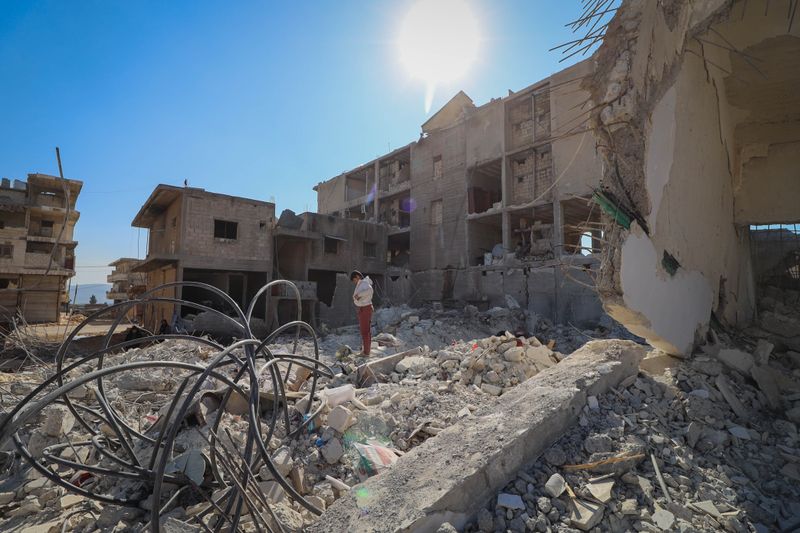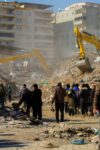A Magnitude 4.1 Earthquake Strikes Northern California
On Wednesday morning, a magnitude 4.1 earthquake hit the southwest Sacramento County area in Northern California, near Contra Costa, Solano, and San Joaquin counties. The U.S. Geological Survey reported that the earthquake occurred at 9:29 a.m. and triggered an early warning system, sending alerts to cellphones across the region. Although the shaking was relatively light, causing only enough disturbance to rattle dishes, it serves as a reminder of the seismic activity prevalent in this area.
Seismic Activity in California
This recent earthquake is the latest in a series of seismic events in California, which experiences an average of 25 earthquakes with magnitudes between 4.0 and 5.0 per year. Over the past 10 days alone, two earthquakes of magnitude 3.0 or greater have occurred in the same vicinity. These frequent tremors highlight the importance of earthquake preparedness and ensuring the safety of individuals and communities in the region.
Churches as Crucial Institutions for Disaster Preparedness
In light of these seismic events, Lucy Jones, a renowned expert on earthquakes, emphasizes the role of faith-based institutions such as churches, temples, and mosques in helping communities prepare for natural disasters. Jones suggests that these institutions can serve as key sources of support and guidance, providing communities with the necessary resources and knowledge to effectively respond to and recover from earthquakes.
Preparing for Earthquakes
As residents of earthquake-prone regions, it is crucial to be prepared and stay informed. The upcoming test drill on the MyShake app, scheduled for Thursday at 10:19 a.m. on International ShakeOut Day, provides an opportunity to familiarize oneself with the early warning system and ensure its effectiveness. Additionally, it is important to report any felt earthquake activity to the U.S. Geological Survey, contributing to a comprehensive understanding of seismic events and helping authorities make informed decisions.
Furthermore, the Los Angeles Times offers the Unshaken newsletter, which delivers essential information on earthquake preparedness in bite-sized steps over six weeks. This resource covers topics ranging from what to do before, during, and after an earthquake to the necessary supplies and apps for earthquake preparedness. By educating oneself and following the advice of experts like Lucy Jones, individuals can take proactive measures to protect themselves and their communities.
Editorial and Advice
These frequent earthquakes in California serve as a reminder of the unpredictable nature of our environment and the need for proactive measures to ensure our safety and resilience. While it is impossible to completely prevent earthquakes, we must prioritize preparedness, response, and recovery efforts.
Lucy Jones aptly highlights the role of faith-based institutions as crucial pillars of support during disasters. Churches, temples, and mosques, deeply rooted in their communities, can provide not only spiritual solace but also practical guidance and assistance in times of crisis. It is essential for these institutions to actively engage with their congregations and local communities, offering preparedness workshops, resources, and guidance on emergency response.
However, earthquake preparedness is a collective responsibility that extends beyond religious institutions. Individuals must take personal responsibility for their own safety and that of their families. This responsibility includes creating earthquake preparedness kits with essential supplies such as food, water, first aid items, and personal documents. Additionally, being knowledgeable about and practicing earthquake safety protocols, such as “Drop, Cover, and Hold On,” can save lives during an earthquake event.
Government bodies and emergency response agencies must prioritize seismic preparedness measures. This includes investing in early warning systems, improving infrastructure resilience, and ensuring efficient communication to support timely and effective response and recovery efforts. By actively collaborating with experts and engaging communities, government agencies can foster a culture of preparedness and enhance the overall resilience of California‘s residents.
In conclusion, the recent earthquake in Northern California serves as a timely reminder to prioritize earthquake preparedness. By leveraging the expertise of professionals like Lucy Jones, engaging faith-based institutions, and actively participating in earthquake drills and preparedness programs, individuals and communities can better navigate earthquake events, protect lives, and minimize the long-term impact of such natural disasters. The responsibility for earthquake preparedness falls upon all of us, and it is through collective efforts that we can build a safer and more resilient California.

<< photo by Ahmed akacha >>
The image is for illustrative purposes only and does not depict the actual situation.
You might want to read !
- The Big Shake: Bay Area Rattled by Earthquake, Prompting Emergency Alert
- Unmasking the Myths: Debunking the Fear Surrounding Friday the 13th
- Prepare for the Spectacular ‘Ring of Fire’ Solar Eclipse This Saturday
- Minor Earthquake Felt: Examining the Impact and Preparedness for Future Seismic Activity
- How prepared is California for the next big earthquake?
- “A Devastating Force: Assessing the Aftermath of Deadly Storms in Las Vegas”
- Bracing for Dual Disasters: California Quake and Approaching Hurricane Hilary
- The Implications of Preparing for Natural Disasters in US Territories: Guam and Typhoon Mawar
- “The Ripple Effect: Examining the Impact of a Small Earthquake in the Puget Sound Region”
- Climate Crisis Exacerbated: Deadly Tropical Storm Idalia Ravages South Carolina
- Hurricane Idalia Bears Down on Florida: Are We Ready?




